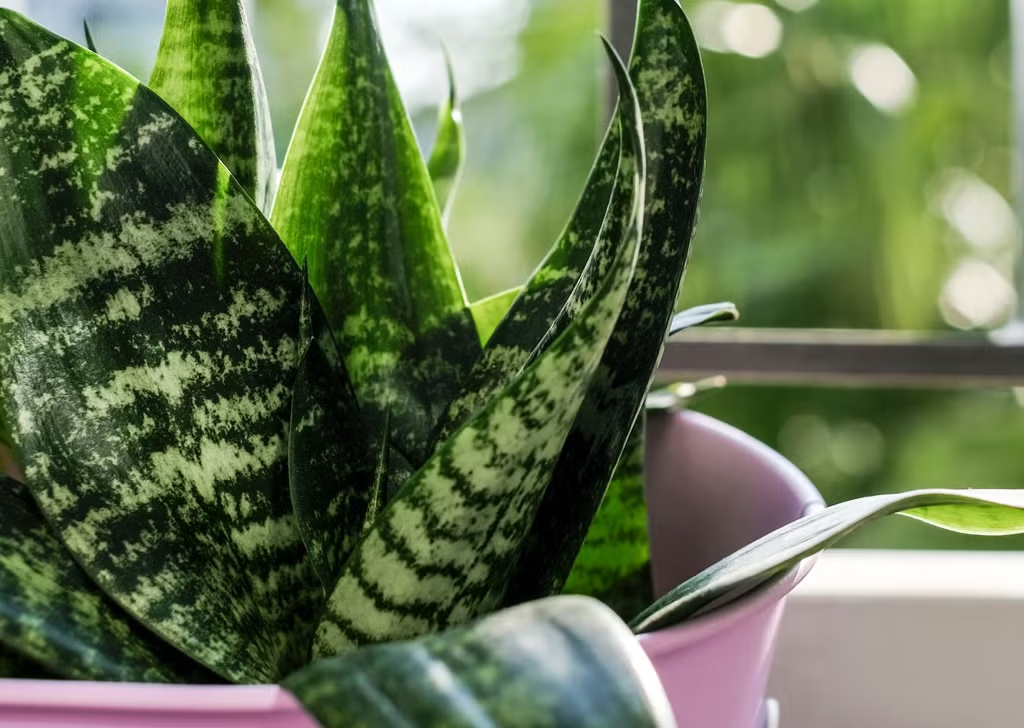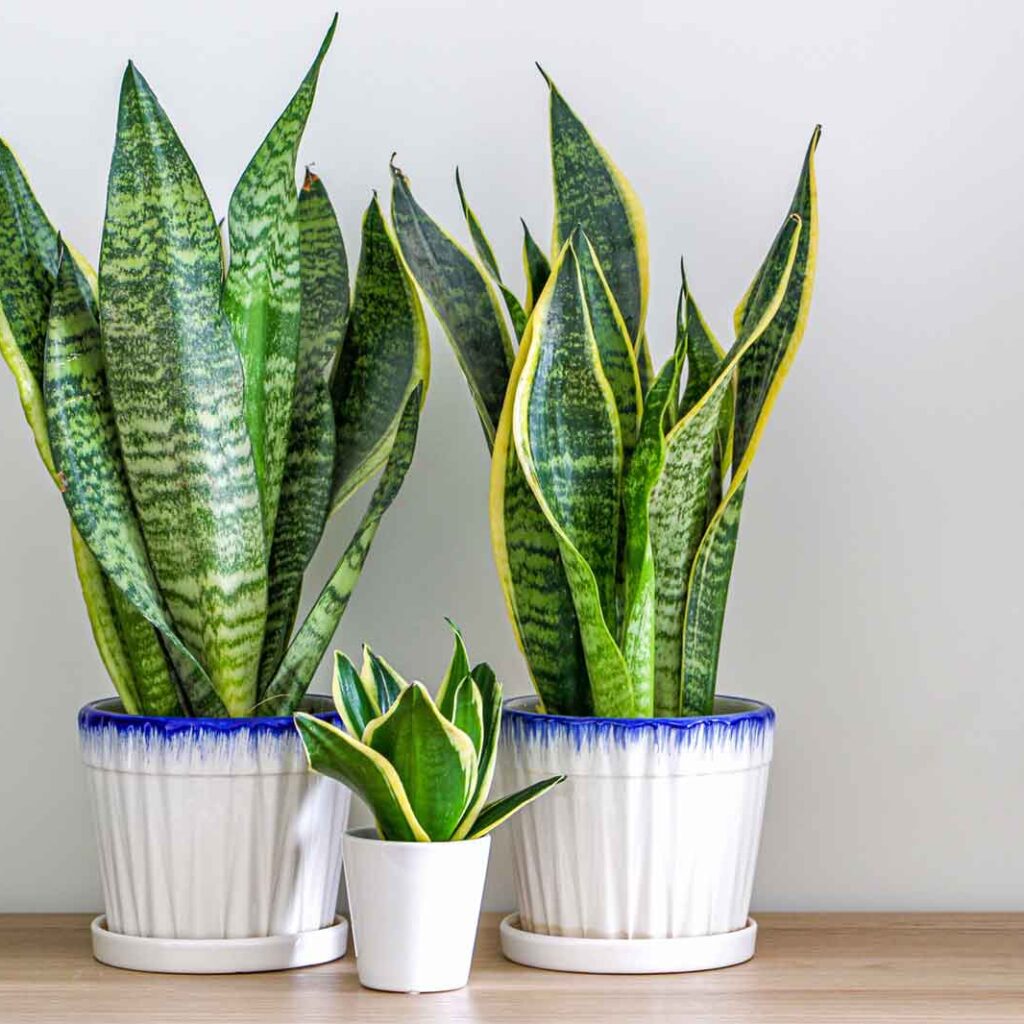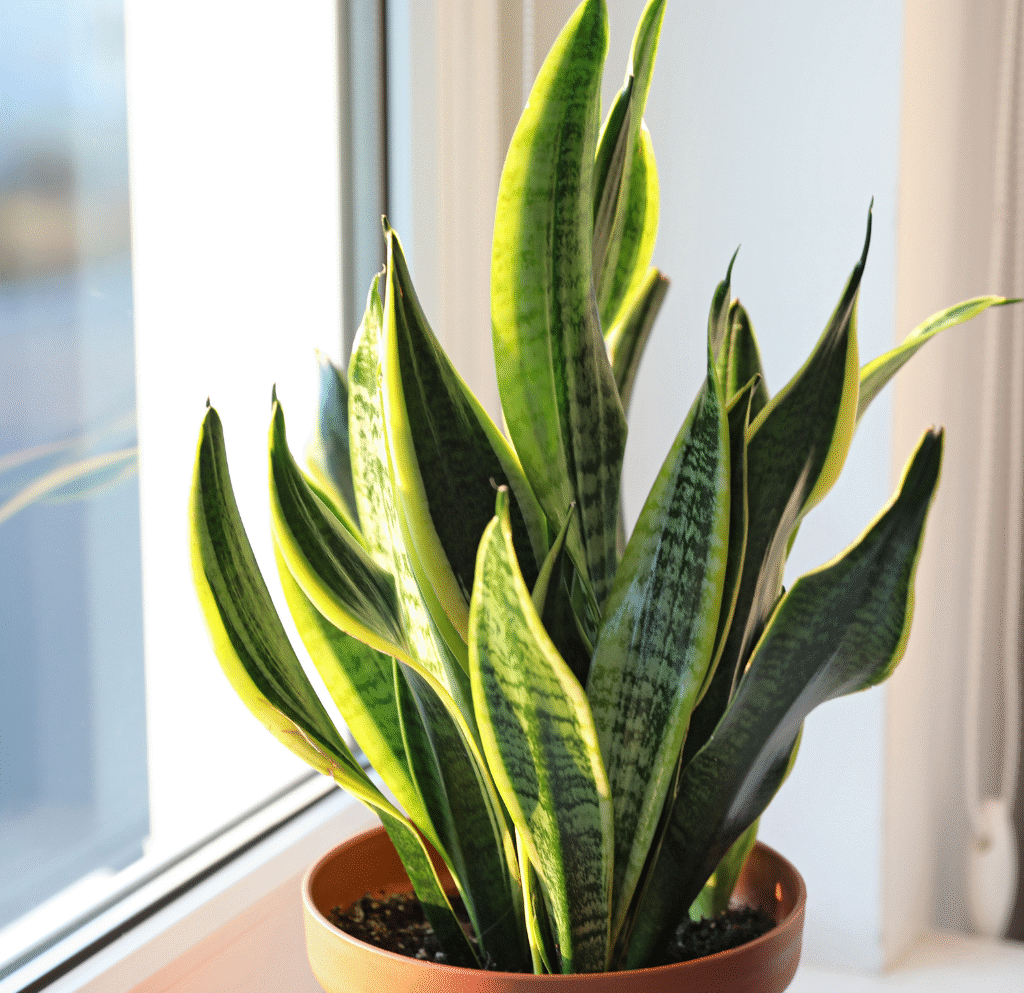If you’re looking for an indoor plant that’s both beautiful and easy to care for, the snake plant (Sansevieria trifasciata), also known as Mother-in-Law’s Tongue, is one of the top choices. With its upright, sword-like leaves and striking green patterns, this resilient houseplant can thrive in various conditions, making it perfect for both beginner and seasoned plant enthusiasts.
In this detailed guide, we’ll cover everything you need to know about how to take care of a snake plant indoors — from ideal lighting and watering schedules to repotting tips and pest prevention. Whether you already have a snake plant gracing your home or you’re planning to bring one in, this guide will help you keep it happy and thriving.

Why Choose a Snake Plant for Your Home?
Before diving into the care instructions, it’s worth understanding why snake plants have become such popular houseplants:
- Low Maintenance: Snake plants are incredibly hardy and require minimal care.
- Air Purification: NASA’s Clean Air Study found that snake plants help filter indoor air by removing toxins like formaldehyde and benzene.
- Attractive Appearance: Their upright, architectural leaves add modern elegance to any room.
- Tolerant of Neglect: They can survive with little light and irregular watering, making them ideal for busy or forgetful plant owners.

Indoor Snake Plant Care Guide
1. Lighting Requirements
Snake plants are highly adaptable when it comes to lighting. They prefer bright, indirect light but can also tolerate low-light conditions, making them suitable for bedrooms, bathrooms, or offices with minimal natural light.
Ideal Light Conditions:
- Place your snake plant near an east- or west-facing window where it can receive filtered sunlight.
- Avoid placing it in direct, scorching sunlight as this can scorch the leaves.
- In low-light environments, the plant will grow slower but will still survive.
Pro Tip:
If you notice the leaves losing their vibrant color or becoming limp, it may be due to insufficient light. Move it to a brighter spot to revive its health.
2. Watering Needs
One of the most common mistakes with snake plant care is overwatering. This plant is a succulent, storing water in its thick leaves, and is prone to root rot if left in soggy soil.
Watering Guidelines:
- Allow the soil to dry out completely between waterings.
- In summer and spring, water about every 2-3 weeks.
- In fall and winter, reduce watering to once every 4-6 weeks as the plant’s growth slows.
- Always use a pot with a drainage hole to prevent water from accumulating at the bottom.
Signs of Overwatering:
- Yellowing, mushy leaves
- Foul smell from the soil
- Black or brown roots (root rot)
Signs of Underwatering:
- Wrinkled or curling leaves
- Dry, brittle leaf tips
Pro Tip:
Use room-temperature, filtered, or distilled water to avoid mineral buildup from hard tap water.
3. Soil and Potting
Snake plants require well-draining soil to prevent water retention around the roots. A cactus or succulent potting mix is ideal.
Potting Tips:
- Use a pot with drainage holes.
- Avoid overly large pots, as excess soil can hold water longer and increase the risk of rot.
- When repotting, choose a container one size larger than the current pot.
Repotting Frequency:
- Snake plants prefer being root-bound and typically only need repotting every 2-3 years or when the plant outgrows its pot.

4. Temperature and Humidity
Snake plants are not particularly fussy about temperature and humidity but thrive best in warm, dry conditions.
Ideal Conditions:
- Temperature: 60°F to 85°F (15°C to 29°C)
- Avoid temperatures below 50°F (10°C)
- Tolerates normal household humidity but avoid overly damp, humid environments.
Pro Tip:
Keep your snake plant away from cold drafts, air conditioners, and heaters, as sudden temperature changes can harm the leaves.
5. Fertilizing Your Snake Plant
While snake plants don’t require frequent feeding, an occasional boost during the growing season can promote healthier, lusher growth.
Fertilizing Schedule:
- Use a balanced, water-soluble houseplant fertilizer diluted to half strength.
- Feed once a month during spring and summer.
- Avoid fertilizing in fall and winter when the plant is dormant.
6. Pruning and Cleaning
Although snake plants are low-maintenance, occasional pruning and cleaning can help keep them looking their best.
How to Prune:
- Use sterilized scissors or pruning shears.
- Remove damaged, yellow, or brown leaves at the base.
- Trim overly long or misshapen leaves for a tidy appearance.
How to Clean:
- Wipe leaves gently with a damp cloth to remove dust, which can interfere with photosynthesis.
7. Propagation Techniques
Snake plants are one of the easiest houseplants to propagate. You can expand your collection or share with friends using several methods:
Popular Propagation Methods:
- Leaf Cuttings in Water: Cut a healthy leaf, place it in a glass of water, and wait for roots to develop.
- Leaf Cuttings in Soil: Allow the cut end to callous over for a day, then plant it in moist soil.
- Division: Remove the plant from its pot, separate the root clumps (rhizomes), and plant them individually.
Propagation works best during spring and summer when the plant is actively growing.
8. Common Problems and Solutions
Even though snake plants are hardy, they can sometimes face issues. Here’s how to identify and fix them:
| Problem | Cause | Solution |
|---|---|---|
| Yellowing Leaves | Overwatering, poor drainage | Reduce watering, check soil, and repot if necessary |
| Soft, Mushy Leaves | Root rot | Remove affected leaves, repot in fresh, dry soil |
| Browning Leaf Tips | Underwatering, low humidity, or cold drafts | Adjust watering, move away from drafts |
| Leaf Curling | Too little water or pest infestation | Increase watering or treat with neem oil |

Final Thoughts
The snake plant is truly one of the most forgiving and rewarding indoor plants you can own. Its striking leaves, air-purifying qualities, and minimal care requirements make it an ideal companion for any living space.
By following these care tips — providing the right light, watering mindfully, using well-draining soil, and occasional pruning — you can enjoy a thriving, healthy snake plant for years to come. Whether you place it in your bedroom for cleaner air or in your office for a touch of nature, the snake plant’s elegance and resilience make it a timeless houseplant choice.






Leave A Comment